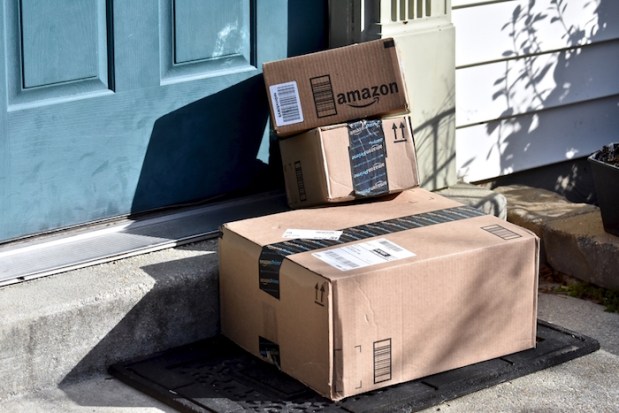Adapting To The ‘Nitty-Gritty’ Of Subscriptions

Consumers clearly like subscription services – demand has skyrocketed by 3,000 percent since 2013, according to PYMNTS research. But with rising demand comes rising expectations. Increasingly, merchants that stand out in this crowded space offer diverse subscription options and the option to make a switch when the mood strikes. Inside the new PYMNTS.com Payments Powering Platforms Tracker, powered by WePay, Krish Subramanian, CEO of Chargebee, discusses the quickly changing space. Find that, headlines and rankings for 78 providers, inside the Tracker.
From personalized style boxes that arrive on consumers’ doorsteps each month to streaming services with thousands of hours of music and movies waiting to be experienced, subscription platforms are some of the fastest growing companies in the world.
But, all that popularity isn’t worth much if the platforms providing those on-demand services can’t receive their monthly payments.
The past few years have proven consumers are willing to fork over some of their hard-earned funds for these subscription services, and on a recurring basis. According to research from the PYMNTS.com Subscription Commerce Conversion Index™ (SCCI), demand for subscription boxes is estimated to have grown by a whopping 3,000 percent between 2013 and 2016 alone.
And, as companies continue to add subscriptions to take care of everything from pet supplies to music, more money is coming into the industry than ever before. While most merchants won’t complain about higher revenue, to paraphrase an old saying, more money also brings more problems — in this case, in the form of increased frictions for both merchants and consumers, and in higher consumer expectations.
According to the SCCI, the merchants that stand out in this increasingly in-demand, highly competitive field offer options — and lots of them. Index research found 100 percent of the top subscription merchants provide plan options, and 95 percent offer customers the ability to change between different plan options when the feeling strikes.
Krish Subramanian, co-founder and CEO of Chargebee, told PYMNTS he became familiar with such friction during his time working with subscription companies. After seeing the industry’s growth, Subramanian and his co-founders realized these new subscription services were delivering anything from massages to groceries — and that the challenges that come with such services were here to stay.
In 2011, they began building Chargebee, a subscription billing and relationship management platform to help merchants process payments for subscriptions simply and, perhaps most importantly, adapt quickly to an evolving landscape. Today, the company processes more than $700 million in subscription payments for subscription service companies including vinyl record provider Vinyl Me Now and food and supplement firm Soylent, among others.
“When we started out, there were very few companies dealing with the nitty-gritty details of payments and management for subscriptions and recurring services,” Subramanian explained. “We realized that [the] subscription merchant world [is] very different than the standard eCommerce world, because these subscriptions are going to have a lot of problems and issues that traditional merchants would never have to worry about. Those are the challenges we’re focused on solving.”
Adapting to a growing market
When Subramanian and his co-founders first brought Chargebee to market in 2012, the subscription segment was worth a fraction of its current value.
But, Subramanian said, the struggles of many merchants in the space were largely the same then as they are today. That huge jump in demand not only increased the number of subscribers many services could count as customers, but also increased the frictions those subscriptions were causing.
Chief among such challenges was maximizing the amount of revenue subscription companies could actually bring in. While most started off catering to smaller, niche groups, Subramanian noted that quickly changed.
“These companies are going through phenomenal changes, and the ones that are growing and scaling to the point that they have a few hundred thousand subscribers — they find out they need to go through multiple channels,” he explained. “You hit a cap when it comes to the amount of subscriptions that are available in a specific geography or niche interest, and you need to expand in order to get more customers subscribing to your service.”
The explosive growth of subscriptions brought on new challenges for merchants, too, Subramanian said. That included taxation and regulation from various governments, which quickly increased as subscription services rapidly became more popular and expanded internationally.
“There have been so many taxation and regulatory changes in different countries as this has grown, and those changes came really fast,” he said. “As those taxes and other regulatory fees increased, it really impacted business.”
Adapting to changing consumers
According to Subramanian, the appeal of subscriptions for companies is guaranteed loyalty. Many companies see offering customers subscription services as a gateway to a highly-coveted prize for any merchant — a steady, reliable stream of repeat purchases.
While the rewards for companies are certainly enticing, processing payments for subscription services can be wrought with challenges, including both the typical frictions surrounding taking a payment and the additional complications inherent to subscriptions — like adapting to how consumers live their lives, keeping up with expired payment methods and keeping tabs on customers that have moved, among others.
But adapting to changing consumers doesn’t mean just keeping up with expiration dates and delivery addresses, Subramanian said. It also means keeping up with how consumers want to pay for and receive their subscriptions. That includes continually adding new payment types, including via mobile platforms and other developing technologies.
“There is such a huge diversity of new payment options that are still coming up and being developed right now,” Subramanian said. “Take a look at Apple Pay. No one expected Apple Pay to have the impact it has had internationally. And now we’re getting even more diverse options for payments as technology continues to evolve.”
For subscription services, though, Subramanian said adapting to a quickly shifting landscape is nothing new. After all, just like the movies and music that populate streaming platforms, no delivery method seems to the stay the same for long.
……………..
To download the October edition of the PYMNTS Payments Powering Platforms Tracker™, powered by WePay, click the button below.
The PYMNTS Payments Powering Platforms Tracker™, powered by WePay, serves as a monthly framework for the space, providing coverage of the most recent news and trends, along with a provider directory highlighting the key players contributing across the segments that comprise the payments-integrated platform ecosystem.

